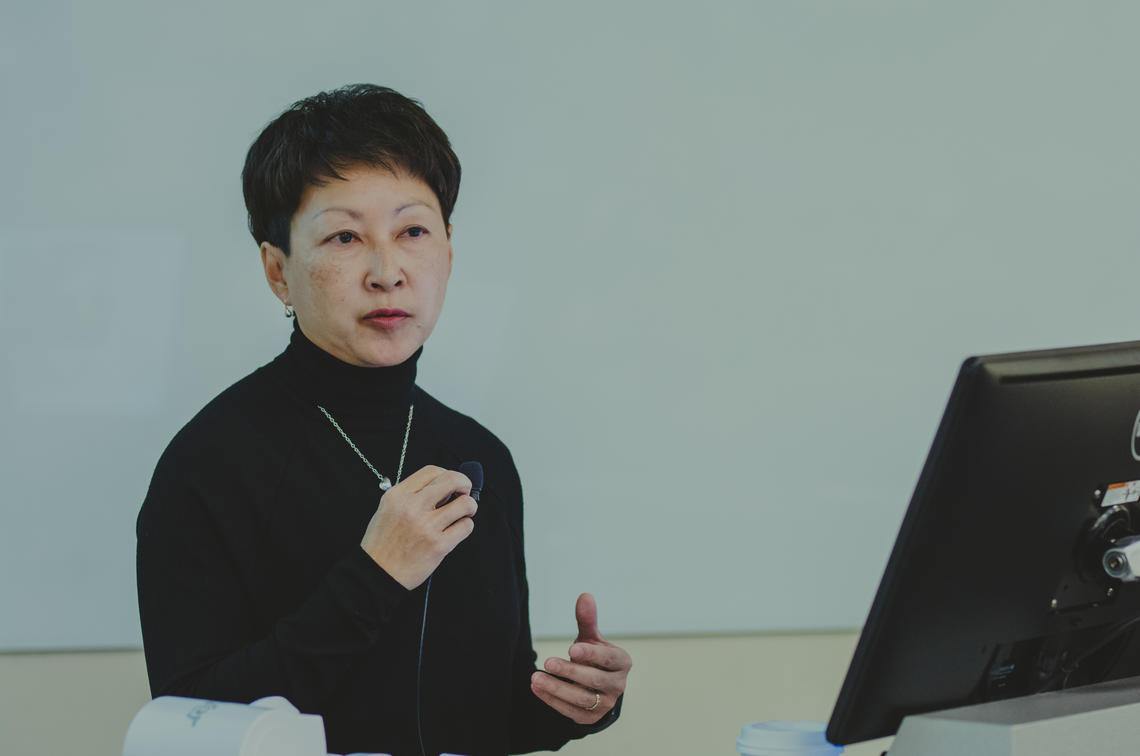March 28, 2017
Person-centred health care in Alberta: From rhetoric to reality

She’s a risk-taker, a rebel, a challenge seeker, a problem solver, and since she was diagnosed with Type 1 diabetes at the age of six, a long-term user of Alberta’s health-care system. On March 6, at a forum presented by the O’Brien Institute for Public Health’s Methods Hub, Maya Pajevic shared her insight as a patient and patient adviser. The audience included patients from across the province, health-care providers, health-care quality improvement leaders, and the CEO of the provincial health-care system.
Person-Centred Care: What Matters to Albertans, brought the importance of adopting a person- and family-centred health-care model at Alberta Health Services (AHS) to the forefront, a model that Pajevic says is important to all Albertans.
“I became a patient adviser because I think it’s my responsibility,” said Pajevic. “In order to make a difference and make person-centred care happen across the province, we all have to play a part.”
Person-centred care (PCC) is a way of thinking and acting that sees people using the health-care system as equal partners in planning, developing and monitoring their care, says Maria Santana, PhD, a researcher and assistant professor with the Department of Community Health Sciences at the Cumming School of Medicine, and a member of the O’Brien Institute and the Libin Cardiovasular Instititute of Alberta.
Santana says there are tremendous efforts underway in the province to practise and measure PCC as a way to improve outcomes, reduce costs, and build better partnerships between providers and patients.
“In Alberta, we are seeing promising initiatives in PCC, such as the Patient and Family Advisory Group at AHS, and other groups like IMAGINE Citizens, and pockets of activities in some clinics,” says Santana.
There is a need for the standardization and measurement of PCC across the continuum of care, and a critical need to report these measurements back to the public, she added.

Maria Santana, PhD, discusses the different initiatives to address person-centred care in Alberta.
Nedaa Al Jezani
Developing person-centred quality indicators
The forum was also an opportunity to disseminate work Santana is leading to develop a set of PCC quality indicators that will be used to assess and improve health-care system performance. Without them, monitoring quality and effectively implementing change is impossible, she says.
The project is being conducted by the University of Calgary, in collaboration with AHS, several Calgary communities, and the Ethno-cultural Council of Calgary (ECCC), which hosted a panel of community co-ordinators at the forum.
The panel participants discussed some of the difficulties immigrants in Calgary face when it comes to accessing health care. These include language barriers, being able to find a health-care provider that is open to discussing cultural preferences, values, and needs, as well as the cost of essential medications, ambulance, and dental care.
“Often when the health-care system measures performance, it’s done by someone from the top — a quality improvement leader, or a clinician,” Santana said. “To achieve person-centred care, we need to incorporate the diverse voices from the community … to inform improvement in the health-care system that would meet the needs of all Albertans.”

Alberta Health Services President and CEO Dr. Verna Yiu.
Nedaa Al Jezani
Making person-centred care actionable
PCC won’t happen without a supportive culture, says Santana.
“When I talk with the clinicians, they say that they don’t have time, they don’t have the resources — so we need to provide that incentive that enables the structure to support PCC. Developing structures that support the use of health information technology is crucial towards making PCC happen,” she says. The proper use of this technology will maximize the co-ordination of care across the continuum, and presents opportunities for patients, families and caregivers to participate in the information.
“We tend to see technology as distractive,” says Santana. “But it’s really all about communication — receiving information.”
Patient-first strategy
In response to the growing body of evidence on the benefits of PCC, AHS President and CEO Dr. Verna Yiu says the organization is committed to building a culture that arranges care around patients and their families.
“Why did we embark on patient-first strategy at AHS? Although we are health-care providers and work in the health-care system, we are also patients and we are also family members,” says Yiu.
Through this strategy, Yiu says AHS will focus on a team-based approach to care, improve co-ordination and continuity of care and improve communication between, patients, families and their health-care providers.
“Patient and family-centred care is really one of the most critical aspects of health care. If we get this right, everything else will fall into place.”
